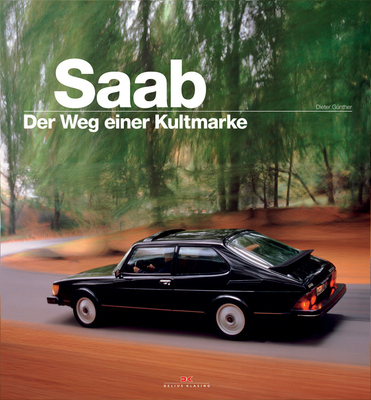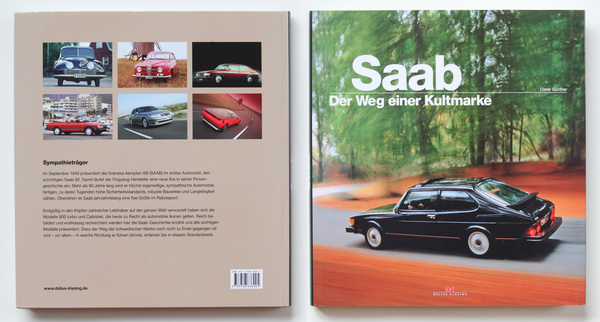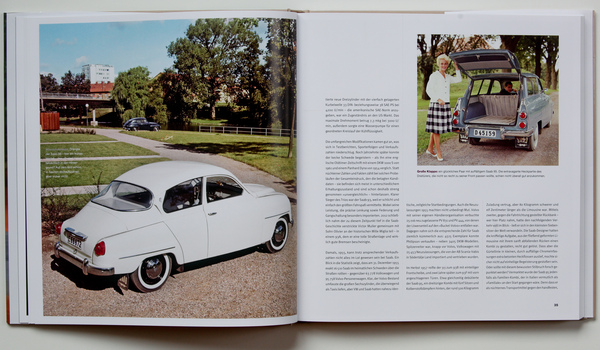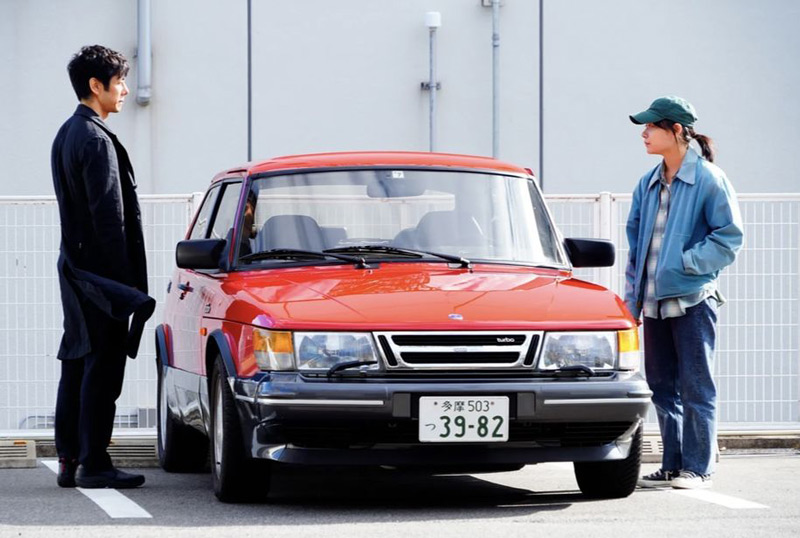If you think of famous automobiles from the Saab brand (Svenska Aeroplan AB), which originated in aircraft construction, you will quickly come up with the list Saab 92, Saab 96, Saab Sonett, Saab 99, Saab 900 and perhaps Saab 9000.
The Swedish manufacturer did not build many more different types, apart from the period under "foreign rule", despite over 40 years of development.
This already crystallizes one thing that made the Saab vehicles special: renunciation of fashion trends, model consistency.
160 pages for an entire brand history
But is one book enough to present the history of Saab in sufficient detail, even if it is ultimately about a few vehicle models, but the space in the 160-page book also has to be shared with a chapter on Volvo?
The answer to this question is "no". Despite the modest number of pages, author Dieter Günther succeeds in telling the whole story of the Saab car manufacturer, starting with the first attempts in the footsteps of DKW, through the production version of the Saab 92 from 1949 with its own two-stroke engine, on to the Saab 93 and 96, which was then also available with a V4 four-stroke engine.

All of these vehicles were characterized by outstanding aerodynamics, which made high speeds and ultimately rally victories possible even with low power.

Günther describes these developments with a fluid "pen" and also introduces the Sonett (Type 94), the Sonett II and III Type 97), the sports cars from Saab, in two chapters.

We continue with the Saab 99 and 900 models, which were able to make life difficult for Porsche drivers thanks to their turbo power and also became a cult vehicle as a convertible. The Saab 9000, designed by Giugiaro in cooperation with Lancia, Fiat and Alfa Romeo, is also mentioned, as are several concept cars from Saab's more recent history.
Also in sport
Günther devotes six pages to sport, but it goes without saying that there is no room here for detailed descriptions of all the rally cars and the trophies won. The author therefore prefers to devote himself to world record drives of the Saab 9000 and Pikes Peak participations.
The chapter that tells of the time under General Motors is entitled "Some marriages are a death sentence that is carried out for years". It is almost too long, but introduces all the relevant models such as the 9-3 and 9-5.
More interesting is the section on Saab specials, which includes a Saab Monoposto, the Saab Quantum from the USA and the Lancia Delta, which went on sale as the Saab-Lancia 600.
Extensively illustrated
The book is illustrated almost exclusively with historical images, and many of the factory photos have also found their way into the attractively designed book in large format. There are also drawings and advertising illustrations that are a joy to behold.

The last section introduces a few Saab-specific terms, discusses Saab achievements (where is the windshield wiper for the headlights?) and lists the production figures from 1950 to 2011.
Reading book
Günther's book is entertaining and fluently written. It also aims to be more of a reader than a reference book, which is why it lacks simple navigation in the form of a keyword index as well as a table section with technical data. But these can be found elsewhere, while much of the background to the history is not. And so even Saab insiders can learn something new at one point or another.

Bibliographical information
- Title: Saab - The path of a cult brand
- Author: Dieter Günther
- Language: German
- Publisher: Delius Klasing; Edition: 1st edition 2013 (March 11, 2013)
- ISBN-10: 3768836002
- ISBN-13: 978-3768836005
- Version: Hardcover with dust jacket
- Scope: 160 pages, 136 color photos, 35 b/w photos, 19 illustrations
- Format: 27.9 x 29.8 x 2.8 cm
- Price: Euro 39.90
- Buy/order: Online at amazon.de
, at the publisher Delius Klasing or in well-assorted bookstores























